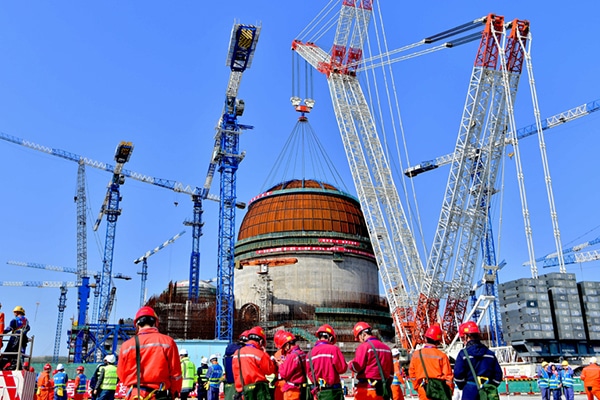Mit der wachsenden weltweiten Nachfrage nach sauberer Energie, der Bau der Atomkraft, als effiziente und kohlenstoffarme Energieform, beschleunigt sich weltweit. In this process, the safety of nuclear power plants is of paramount importance, and the nuclear island, as the core part of a nuclear power plant, the robustness and durability of its structure is the key to ensure the safe operation.HSA Microsilica, as a special material, has been widely used in the construction of nuclear islands of nuclear power plants, which significantly improves the performance of the concrete, and provides a solid guarantee for the safe operation of nuclear power plants.
Background:
The nuclear island of a nuclear power plant is the structure that houses the reactor and related equipment, and it must be able to withstand extreme operating environments, including high temperatures, high pressures, radiation, and potentially natural disasters such as earthquakes. Als Ergebnis, construction materials for nuclear islands need to be extremely strong and durable. Although traditional concrete is widely used in construction, its performance in special environments such as nuclear power plants still needs to be improved.
Application of HSA Microsilica:
HSA Mikrosilica, during the high-temperature smelting of industrial silicon and ferrosilicon by industrial electric furnaces, the smoke and dust escaping with the exhaust gas are collected and processed by a special collection device. This material is highly reactive and can react with the silicate in cement to form a denser and stronger concrete structure. During the construction of nuclear islands in nuclear power plants, HSA Microsilica is added to concrete to improve its compressive strength, impermeability and durability.
At a new nuclear power plant project in China, engineers used HSA Microsilica to strengthen the concrete at the base of the nuclear island. Prior to construction, engineers rigorously tested the properties of the HSA Microsilica to ensure that it would remain stable at high temperatures and in radiation environments. The amount of HSA Microsilica added to the concrete mix was precisely calculated to achieve optimal mechanical properties.
During construction, HSA Microsilica is mixed with cement, aggregate and water to form a new type of high-performance concrete. The concrete shows excellent workability during placement, is easy to pour and vibrate, and exhibits five times the strength of conventional concrete after hardening. Zusätzlich, the concrete has better impermeability and durability, and can effectively prevent the leakage of radioactive materials, ensuring the long-term safety of the nuclear island structure.
Results and Impact:
Through the use of HSA Microsilica, the nuclear island base of this nuclear power plant has achieved significant improvements in construction quality and safety. The application of this material not only improves the construction efficiency, but also reduces the long-term maintenance cost, which provides a strong guarantee for the stable operation of the nuclear power plant. Zur selben Zeit, this case also demonstrates the potential of HSA Microsilica in nuclear power engineering, providing a new material choice for the construction of future nuclear power plants.
As an innovative material, Die application of HSA Microsilica in nuclear power engineering proves its remarkable effect in enhancing the performance of concrete. With the continuous development of nuclear power technology, this material is expected to be applied in the construction of more nuclear power plants, contributing to the development of global clean energy.





